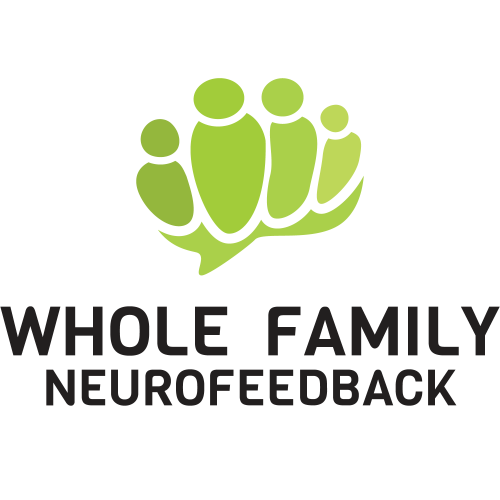Using Neurofeedback To Break Negative Thought Patterns
(And Bring Yourself Back To The Present Moment)
Have you ever gone through the day and thought, nothing is going my way today?
Have you ever replayed a terrible moment in the day over and over again?
Maybe you didn’t do well on a big presentation for work and you think “I never do anything right.”
Sometimes these thoughts can be fleeting but it’s easy for them to become a pattern or a habitual thought process.
Today we’re going to talk about what negative thought patterns are, the science behind why they become habitual, and what you can do to interrupt them. You’re also going to read about a real-life example — a client who used neurofeedback to gain more clarity in his life and break negative, circular thought patterns.
What Are Negative Thought Patterns?
Once you’re in a negative thought pattern – it’s hard to get out! Many people describe them as circular, meaning one negative thought leads to another to the point where the person feels like they’re going around in circles. It often becomes habitual and you can feel “stuck.”
At some point, everyone will experience them. Let’s take a look at some examples of negative thought patterns.
Black or white thinking
Also called “all or nothing thinking” by psychologists, this is when you’re seeing a situation as either all good or all bad. With this way of thinking there is no gray area.1
Some examples are:
You’re at work and you have one bad client interaction. You think “My entire day is ruined.”
A senior in high school is taking the SATs, if they don’t get a perfect score they think they’ll never get into college.
Overgeneralization
When you take one negative detail or event and decide that it’s true about your entire life. Instead of seeing it as just one bad experience or situation, you generalize it to your whole life.
Here are some examples:
You made one small mistake at work and you think ”I never do anything right.”
You didn’t get the job you interviewed for and you think “I’ll never be able to advance my career.”
Ruminating Thoughts
This is when you get “stuck” in a thought pattern or dwell on a situation to the point where it’s unhealthy and you’re unable to move forward.
An example of this:
A high school student didn’t do well on a test. Instead of creating a plan to do better next time they dwell on the mistakes over and over again. This leads them to think that they will do poorly on all future tests.
These are just some examples of common negative thought patterns. There are more. You can probably read through this list and find at least one or two you’ve experienced. It’s important to know that this can happen to anyone but there are things you can do to help.
Negative Thoughts Happen To Everyone
It’s important to note that these are thought patterns that anyone can have and everyone (at some point) will experience.
You might have even learned these patterns in your childhood. Did your mother or father have any of these negative thought patterns? We can learn these patterns without even realizing it.
Now, it’s important to take note of your thoughts and see what changes you can make. These negative thought patterns can easily take on a life of their own but it doesn’t mean you are powerless to change them.
There are a few ways you can learn to change them. There are many active ways you can change your thoughts. You can do it with a self-help book or you may want to work with a therapist or psychologist.
Neurofeedback is also a tool that can help optimize your brain, develop better flexible thinking skills and help you to feel more relaxed and calm. Neurofeedback can be used alongside any other resource or support you choose.
Can Neurofeedback Help Break Negative Thought Patterns?
The short answer to this question is, yes. Since I’m a NeurOptimal® trainer and practitioner, I’d like to talk more about how NeurOptimal® neurofeedback can help.
Our thoughts can quickly become habitual because the more we think about something, the deeper we are creating a neural pathway. A neural pathway is a pathway that helps your brain communicate from one part of your body to another.2
Think of a path in the forest as a neural pathway. At first, the path probably isn’t clear and has a lot of leaves and debris on it. If you walk that path every day, it gets clearer and more worn. The trail gets deeper and more worn as you use it. It will get to a point where walking that trail becomes second nature and even if it gets thick with brush again, you’ll know exactly where to go. You might even start walking toward the path automatically.
This is the same with our thoughts. If you get stuck in a pattern, you create a neural pathway that can create an automatic way of thinking.
NeurOptimal® helps break up those thought patterns that aren’t working for you and create more efficient pathways to optimize brain functioning. In essence, neurofeedback is your brain learning to move toward stability.
How Does NeurOptimal® Work?
NeurOptimal® neurofeedback works by monitoring your brain’s electrical patterns while you’re listening to music or watching a movie. It allows your brain to tap into its natural instinct toward resilience and flexibility and when needed, you’ll hear a brief pause in what you’re listening to.
This pause is the “feedback” your brain needs to bring you back to the present moment. This helps break up consistent, habitual thought patterns as your brain moves toward more flexibility and resilience.
Until you do neurofeedback, it can be hard to understand exactly how you’ll get results. Let’s talk about how NeurOptimal® helped Scott get out of negative thought patterns and achieve greater clarity.
Scott’s NeurOptimal® Experience
Scott was navigating a tough time in his life, including a difficult time in his marriage. He heard about neurofeedback and how it might be able to help him.
Scott wasn’t convinced that NeurOptimal® could help him.
He wasn’t sure he needed it.
After doing research and learning about it he decided to try it for at least 30 days and committed to doing at least 1-2 sessions every day.
As he did the sessions, it felt a lot like the feeling he’d get from meditation. He felt relaxed and calm. Other than feeling relaxed and calm, he couldn’t tell if it was helping him.
Then a friend pointed out that he was different. His friend noticed that he was:
- More “present” and engaged in social situations
- Less “scrambled” and spoke more clearly
- Had more clarity about his life and navigating difficult situations
Scott started to take more notice of these changes. He was thinking more clearly and – more importantly – he was able to get out of negative thought patterns and set more boundaries with people in his life.
Scott says neurofeedback is a way to teach your brain to get out of these negative thought patterns. When the system pauses, it brings you back to the present moment. When you bring yourself back to present you’re interrupting the thought pattern.
With NeurOptimal®, you’re opening yourself up to creating a new neural pathway, one that’s more efficient and flexible.
Scott’s Advice To Others
At first, Scott didn’t see himself as someone who needed neurofeedback. It didn’t take long for him to identify how it helped him and see how it transformed other people’s lives. For Scott, interrupting the negative, circular thought patterns he had and seeing the world with more clarity is the biggest benefit of neurofeedback.
“People with PTSD, ADHD, or other diagnoses can get caught up in negative thought patterns. NeurOptima® teaches your brain to get out of these thought patterns.”
Although it’s not a cure for any medical or mental health diagnosis, bringing yourself back to the present moment during times of turbulence will help train your brain to work more efficiently for you.
Want To Learn More About NeurOptimal®?
NeurOptimal® works with each person individually so you only get the feedback you need. Remember, it’s just one tool to help you optimize your brain, help you to feel calm, and bring you back to the present moment.
You may still need additional help and resources but neurofeedback can help you feel more relaxed and calm so you can get the most out of any other help and support.
Do you want to break through negative thought patterns?
If you’re interested in learning more about how NeurOptimal® can help you, fill out our contact form here. We’ll get back to you as soon as possible.
We’ll answer your questions and discuss if NeurOptimal® is a good fit for you.
Sources

